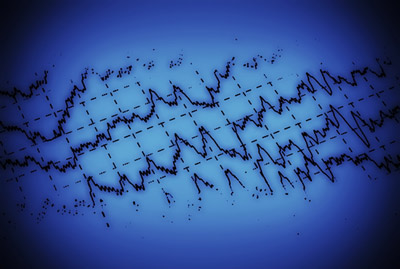EMA accepts submission for Zebinix use as a monotherapy for partial-onset seizures
Bial has announced that the European Medicines Agency (EMA) has accepted its application to review recent clinical trial data for Zebinix® (eslicarbazepine acetate) for its use as a once-daily monotherapy in the treatment of adult patients with newly diagnosed partial-onset (focal) epilepsy.
Application accepted to review recent clinical trial data for Zebinix
Partial-onset seizures, also known as focal, are the most common type and are therefore an important first target for treatment.[i] Zebinix®, (eslicarbazepine acetate) is currently indicated in Europe as an adjunctive therapy in adults with partial-onset seizures, with or without secondary generalisation.[ii] In the US, eslicarbazepine acetate (Aptiom®) is indicated for the treatment of partial-onset seizures as monotherapy or as an adjunctive therapy.[iii]
“We have been developing eslicarbazepine acetate for many years and it’s very encouraging to have the monotherapy submission acceptance”
Commenting on the submission António Portela, CEO of Bial, explains, “It is a significant milestone in Bial’s commitment to help people who live with epilepsy. We have been developing eslicarbazepine acetate for many years and it’s very encouraging to have the monotherapy submission acceptance. We hope it will become available for those living with epilepsy and for those who manage the condition”.
The submission was based on the results from a Bial sponsored Phase III study [4,5] in adult patients with newly diagnosed partial-onset seizures which demonstrates that treatment with monotherapy is as effective as controlled-release carbamazepine, a standard of care, and is well-tolerated.
This phase III study[iv],[v] is a randomised, double-blind, parallel-group, active-controlled and non-inferiority study, that investigates the efficacy and safety of once-daily eslicarbazepine acetate (800 to 1600 mg/daily) as monotherapy treatment for newly diagnosed adults (18 years and older) with partial-onset seizures in comparison with twice-daily controlled-release carbamazepine (400 to 1200 mg/daily). The primary endpoint was the proportion of people seizure free for the entire 26-week evaluation period. Secondary endpoints included the time to first seizure, a QOLIE-31 quality of life assessment, and safety. These data were recently presented for the first time at the Academy of Neurology Annual Meeting April 2016.
Efficacy analysis from this study[4] shows seizure freedom rates of 71% with eslicarbazepine acetate and 75.6% controlled-release carbamazepine in 785 eligible patients at ≥6 months at the last evaluated dose (average risk difference -4.28%, 95%CI -10.3, 1.74%). The one-year seizure-free rate at the last evaluated dose was 64.7% in the eslicarbazepine acetate group and 70.3% in the controlled-release carbamazepine group (average risk difference: -5.46%; 95%CI: -11.88, 0.97%).
A safety analysis[5] in 813 patients shows that once-daily eslicarbazepine acetate is well tolerated and side effects are mild to moderate. Incidence rates of treatment emergent adverse events (TEAEs) were similar but slightly lower in patients receiving eslicarbazepine acetate versus patients receiving controlled-release carbamazepine (77.8% vs 80.1% respectively). Possibly-related TEAEs for eslicarbazepine acetate were 43.6% compared with 51.5% for controlled release carbamazepine. Serious treatment-related TEAEs in eslicarbazepine acetate treated patients versus patients treated with controlled release carbamazepine were 2.0% vs 2.7% and for TEAEs leading to withdrawal were 13.5% vs 18%. The most frequently reported possibly-related TEAEs for eslicarbazepine acetate were headache, dizziness, nausea, fatigue, and somnolence.
Eslicarbazepine acetate is a voltage-gated sodium channel blocker. It selectively targets the slow inactivated state of the sodium ion channel[vi] which, stops sodium entering the nerve cells in the brain.[vii] This reduces the activity of the nerve cells, reducing the intensity and the number of seizures.[7]
References
- European Medicines Agency. Guideline on clinical investigation of medicinal products in the treatment of epileptic disorders 2010 (22 July); CHMP/EWP/566/98 Rev.2/Corr
- Zebinix® Summary of Product Characteristics http://www.ema.europa.eu/docs/en_GB/document_library/EPAR_-_Product_Information/human/000988/WC500047225.pdf (accessed April 2015)
- Food and Drug Administration, Highlights of Prescribing Information https://www.accessdata.fda.gov/drugsatfda_docs/label/2015/022416s001lbl.pdf (accessed May 2016)
- Trinka E, et al. Efficacy of eslicarbazepine acetate versus controlled-release carbamazepine as monotherapy in patients with newly diagnosed partial-onset seizures. Presented at AAN 2016; abstract 001
- Kowacs P, et al. Safety and tolerability of eslicarbazepine acetate as monotherapy in patients with newly diagnosed partial-onset seizures. Presented at AAN 2016; abstract 002
- Hebeisen S, et al. Eslicarbazepine and the enhancement of slow inactivation of voltage-gated sodium channels: a comparison with carbamazepine, oxcarbazepine and lacosamide. Neuropharmacology 2015; 89:122-35
- European Medicines Agency, Zebinix eslicarbazepine acetate, How does it work? http://www.ema.europa.eu/ema/index.jsp?curl=pages/medicines/human/medicines/000988/human_med_001172.jsp&mid=WC0b01ac058001d124 (accessed April 2016)
- Elger C, et al. Eslicarbazepine acetate: A double-blind, add-on, placebo-controlled exploratory trial in adult patients with partial-onset seizures. Epilepsia 2007; 48:497-504
- Elger C, et al. Efficacy and safety of eslicarbazepine acetate as adjunctive treatment in adults with refractory partial-onset seizures: A randomised, double-blind, placebo-controlled, parallel-group phase III study. Epilepsia. 2009;50:454-63
- Ben-Menachem E, et al. Eslicarbazepine acetate as adjunctive therapy in adult patients with partial epilepsy. Epilepsy Res. 2010;89(2-3):278-85
- Gil-Nagel A, et al. Efficacy and safety of 800 and 1200 mg eslicarbazepine acetate as adjunctive treatment in adults with refractory partial-onset seizures. Acta Neurol Scand. 2009; 120:281-7
Related organisations
Bial










